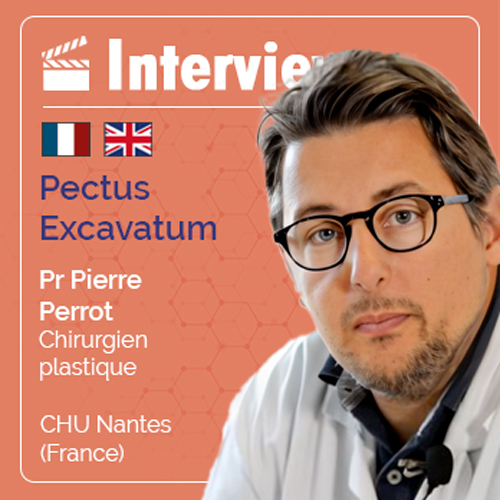Presentation of Pr. Perrot
Head of Burns and Plastic surgery department at Nantes University Hospital. Prof. Pierre Perrot divides his activity between the care of burn patients at the adult and child burn treatment center (acute phase and after-effect phase) and a classic plastic and reconstructive surgery activity.
He has a particular focus on the thoracic surgery region, mainly microsurgical breast reconstruction using Diep type flaps and thoracic malformations reconstruction.
What is your experience with Pectus treatment?
Sunken chest treatment is an activity that I have always known in the Nantes University Hospital department. My predecessors used to treat this pathology but not with modern techniques such as Computer Assisted Design (CAD), resulting in a very DIY approach, requiring intraoperative adjustments.
CAD have completely changed the Pectus surgery in our hospital as it became an easy surgery, very protocolized, with a structured preoperative organization.
Thank to that technique, patients that come to see me already know the pathology which makes the surgery easier.
What is your feedback regarding the implants?
Implant technique is much easier for the surgeon as it only requires to carry out a simple scan.
Implants are perfectly adapted to the patient deformity thanks to the image of his deep malformation whereas before, the implant was an image of the skin reflection of the malformation, which was not adapted. The proof is when we put them intraoperatively, they fit with millimetric accuracy.
The surgical follow-up is also simpler because the intervention is shorter than before. The implant is placed only once, it does not need to be taken out and recut as it was done 15 or 20 years ago. It allows dead spaces reductions, much fewer post-operative complications, fewer dressings. Patients are very satisfied.
The surgery lasts between 45 and 75 minutes. Hospitalization time is shorter with 1 to 2 post-operative nights. Post-operative follow-up consists in an average of 1 to 2 punctures within two weeks, so three weeks post-operative maximum.
Does Pectus have a functional impact?
It is difficult to answer this question because I think that thoracic and plastic surgeons don't see the same patients.
It is clear that the patients who come to see us do not have functional troubles. They come to see a plastic surgeon about to treat the aesthetic and social dimension of their deformity. And that is exactly the indication for these implants.
For us, plastic surgeons, it seems extremely unreasonable to perform a thoracic surgery when there is no functional impact. Maybe there are some severe cases with functional repercussions, patients must see our thoracic colleagues as first intention then.
Notable clinical cases of Prof. Perrot
I have two different indications in mind. The first is a bit anecdotal, but I operated a 19 year’s old boy three years ago, then I operated one of his 2 brothers, and, in a few weeks, I will operate the third brother. That means that they really liked the technique!
The second indication is the one I like most because result is even more flattering for women, as Pectus often have an impact on women’s breast. And when you are a plastic surgeon, with a large activity in breast surgery, you often attend patients who do not like their breasts, but in fact they have a thoracic deformity, not a breast deformity. The positioning of a custom-made thoracic implant resolves, in most cases, their breast perception. They are satisfied with it, and they do not ask for additional breast augmentation surgery afterwards.


